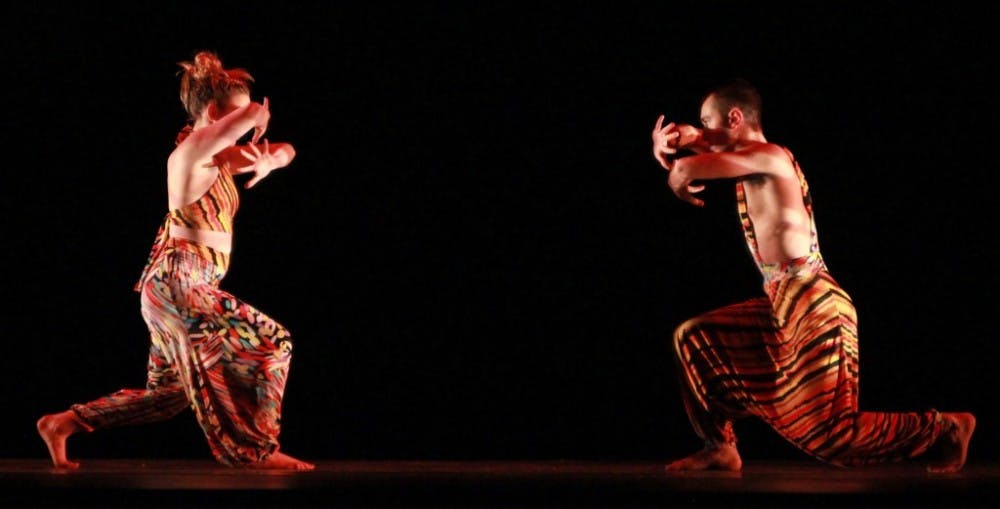The Elon Dance Company held its annual spring dance concert titled “Looking Back to Spring Forward.” The concert was held in McCrary Theatre and featured a collection of six contemporary and modern pieces choreographed by dance faculty members and guest choreographers.
The performance’s first piece was “luminitza,” a contemporary ballet work choreographed by Elon assistant professor of dance Jen Guy Metcalf.
The entire stage was completely dark with the exception of the back of the stage, which was lit by lamps. This allowed the shadows to emphasize the elongated lines created by the dancers and enhanced the dramatic effect upon the audience.
Although very athletic, the piece maintained elegance rooted in classical ballet techniques. This combination of classical ballet and contemporary movement was reminiscent of famous choreographer and dancer George Balanchine’s work.
In contrast, “passing platforms,” choreographed by adjunct assistant professor of dance Sara Tourek, utilized a more modern emphasis. Clad in white pantsuits, the dancers kept perfect unison during complex sequences, often transitioning from rapid movements to finishing in a sustained pose.
Some pieces carried deep personal significance and were a physical interpretation of a life journey. Such was the case with “Evening Shade,” choreographed by the shows artistic director and associate professor of dance Lauren Kearns.
Based on her own life, Kearns’ piece narrated a journey of a woman who was diagnosed with breast cancer. The dancers effectively demonstrated emotions of despair through their movements. Senior soloist Jenn McAllister trembled and aggressively threw her hands up in the air as she stood alone on the stage.
But there were also hopeful messages in the piece. Other dancers joined McAllister, and together, they supported one another. This piece was especially touching and heartfelt.
African influences were incorporated into modern piece “Sankofa,” choreographed by assistant professor of performing arts Jason Aryeh. The upbeat music and energetic choreography engaged the audience.
In both “Sankofa” and “The Sisters of Sardinia,” choreographed by adjunct assistant professor of dance Natalie Marrone, the dancers demonstrated unparalleled athleticism as they exploded into powerful jumps and then gracefully retreated to the floor.
“Torrid Zone,” choreographed by guest choreographer Diane Coburn Bruning, closed the show with passion and fire. This piece incorporated Spanish music and intertwined several themes.
In the backdrop, three black panels of fabric were lowered, allowing two panels of open space in which dancers could be seen. From the beginning, dancers leapt across the open space and were instantly hidden by the black panel, only to emerge seconds later in the other open space.
Overall, the March 13-15 performances were remarkable, and the caliber of dance exhibited by each of the dancers was exceptional. It truly left a lasting impression.


